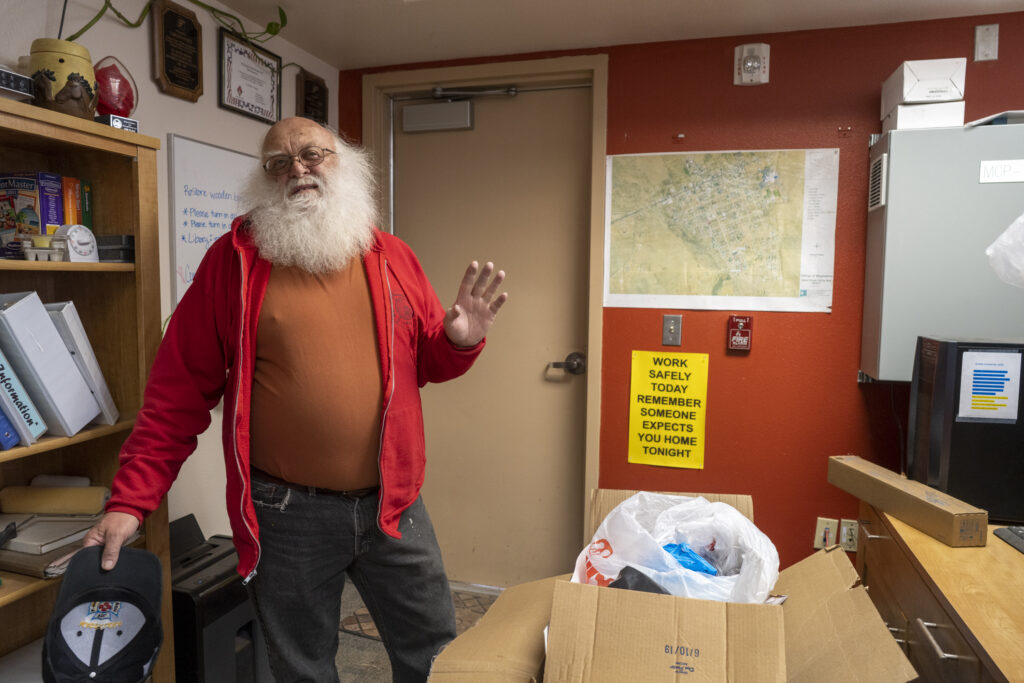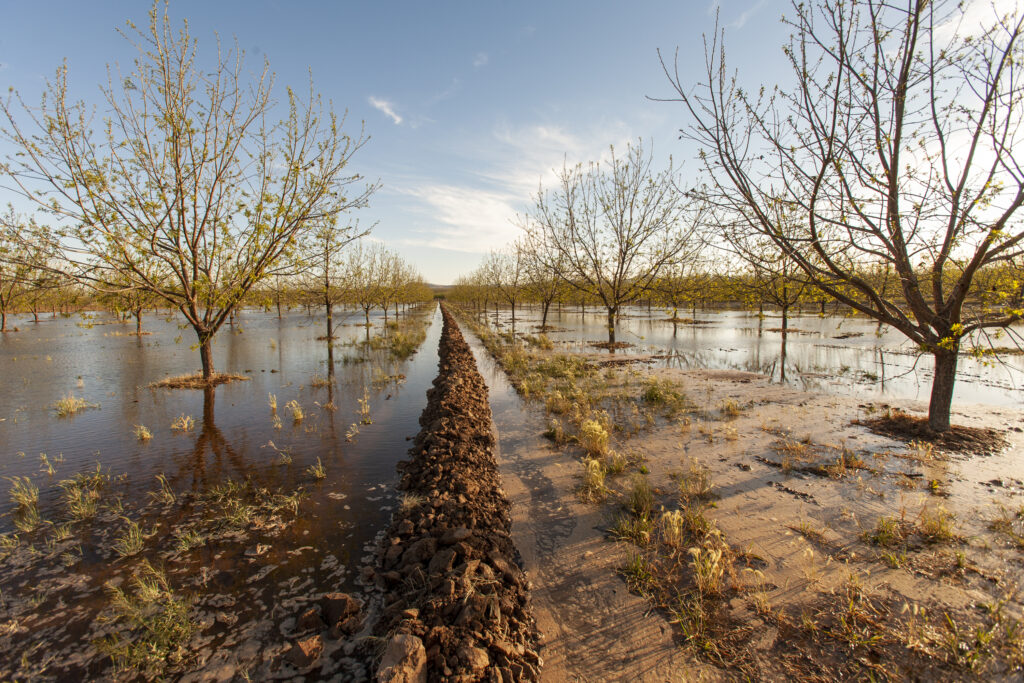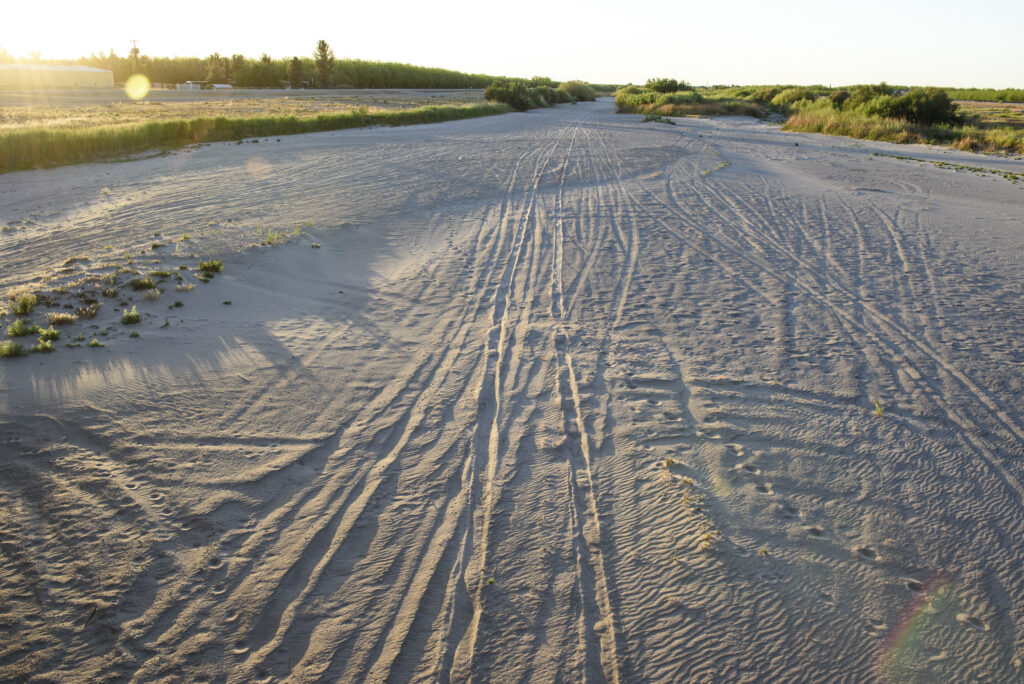By Lindsay Fendt and Annabella Farmer / Searchlight New Mexico
Magdalena, N.M. — Mayor Richard Rumpf drives slowly through town — population 870 — and gestures toward the new ambulance, the volunteer fire department that he captains, the library housed in a converted train station. His role in the community spans everything from substitute teaching at the local school — “State champs again,” he says proudly of the boys basketball team — to playing Santa Claus in the Christmas parade.
“This is my community,” Rumpf says. “I put a lot of effort into it.”
A large part of that effort goes to one of Magdalena’s primary concerns: water management. As climate change makes the state ever hotter and drier — threatening small towns, rivers and cherished landscapes — few places are taking this problem as seriously as Magdalena.
Tucked away in a corner of Village Hall behind a box of Christmas decorations is a computer screen that displays water levels in the town’s well in real time. It may not look like much, but this state-of-the-art well-monitoring system is one of the only indications of what happened in Magdalena eight years ago when, without warning, the town’s only functional well went dry.
The utilities manager at the time measured the water level once per year. But when residents noticed air bubbles in their water lines, he went to check the well — fed by a single underground aquifer — and found that the water had dropped 15 feet since his previous measurement. It was sitting below the reach of the pump. Some residents went without running water for almost a week while others suffered milder inconveniences. A group of local business owners filed a lawsuit citing negligence in maintaining the town’s water infrastructure.

Now, though the memory of that well failure is little more than a blip for many residents, it has changed the way the village thinks about water. For Rumpf, it’s become a question of survival.
Rumpf says he now thinks about Magdalena’s water system “every single day.” He’s fortifying the village against future scarcity — monitoring wells, building new water tanks and conserving water. He has secured grant money to help with infrastructure, and is committed to protecting the village’s water future.
But Magdalena’s innovative approach to water conservation is an anomaly in New Mexico. The state’s rural areas often lack the resources for robust water data systems. Instead of advanced well-monitoring systems, steel tape-measure soundings track water levels. Some small towns keep records of water levels by handwriting them on the walls of well houses, which are periodically painted over — obliterating important data and making them more vulnerable to well failure.
Often, it takes a crisis like Magdalena’s for a small-town government to recognize the problem and act on it. And even as news of the drying Southwest has become common knowledge, the New Mexico state government has done almost nothing to prepare for this future, failing to even collect enough basic data to determine how much water there exists in the system. By the time New Mexicans realize the stakes, it may be too late.
“It could be 100 years, or 80 years, or 60 years — we’ve got a limited amount of water,” says Dave DuBois, New Mexico’s state climatologist. “We’ve got these long horizons, but that doesn’t mean we need to blow through that and then figure out what to do.”
Water data’s big black hole
Magdalena’s well crisis was a wake-up call for Stacy Timmons, associate director of hydrogeology programs at the New Mexico Bureau of Geology. Timmons is based at New Mexico Institute of Mining and Technology in Socorro, the “big city” closest to Magdalena, and when the town started having water trouble it called her in to help.
With her small team, Timmons started trying to put together information about the history of the well and the aquifer it draws from. The reports they needed weren’t available anywhere and they spent months piecing together the data required to solve the town’s problems.
“It was a bit eye-opening as to how much time it took, and in a moment of crisis like that when they were out of water, time wasn’t something that we had a whole lot of,” says Timmons.
She soon realized that the problem wasn’t isolated to Magdalena: All over the state there were huge gaps in water data. There was no centralized database with records or measurements — everything had to be pieced together document by document.
The problems extend beyond small-town water governance. The state as a whole also does little to track how much water flows in and out of its rivers and aquifers. There isn’t a state agency that tracks how many wells go dry each year, or a single office that can provide a firm answer on how much water is used throughout the state.
It all adds up to a big black hole in water information, which means that no one in the state of New Mexico knows how much water the state has or how much time remains before it disappears.

Many water experts say that assembling this information is the critical first step in planning for a future with even less water.
“We could go one way, which is just to throw up our hands and say we’ll just deal with it as it comes,” Timmons says. “The other way would be to really try to nail down exactly how much [water] we have and make sure we can be fair and equitable about everybody getting some.”
But closing these data gaps won’t be easy. Many water measurements require manual labor that can only be done onsite with rudimentary tools. More advanced types of data collection are often prohibitively expensive and require specialized staff. Since her epiphany in Magdalena, Timmons has been busy finding ways to embark on this long arduous process.
She’s already helped launch several groundwater mapping and monitoring projects. She is also in charge of implementing the Water Data Act, a law passed in 2019 that requires state water agencies to standardize information and make it accessible to the public.
But New Mexico has been hesitant to fund these projects. The Water Data Act appropriated only $110,000 in funds from state coffers — hardly enough to organize the state’s water resources.
And while it may be bad now, it’s about to get much worse.
This is not a drought
Across the Southwest, the effects of climate change are already apparent in rising temperatures, thinning snowpacks, and sparse and variable precipitation patterns. These symptoms might be mistaken for the periods of historic drought familiar to longtimers, but unlike past drought cycles, today’s water scarcity will not be alleviated by periods of relative moisture.
All water that ends up in New Mexico’s water budget begins as rain or snow, which either runs off into rivers and streams (i.e., surface water) or seeps into the earth as groundwater, replenishing aquifers.
As rain and snow dwindle, water supplies are acutely affected. Thin snowpacks mean less runoff into rivers and streams, which means less aquifer recharge, which means less groundwater. When surface water is scarce, people start pumping more groundwater. This, in turn, means even less surface water, as drains on aquifers can sap water from rivers and streams.
Andrew Erdmann, the state’s newly appointed water planning program manager, likens the projected reduction in groundwater recharge to “having the interest rates go down on your savings account.” And, experts say, these conditions will only get worse. The only uncertainty is how much worse and how fast it will happen.
DuBois, the state climatologist, recently collaborated on a draft analysis of climate change impacts on water resources as part of the state’s working 50 Year Water Plan. The forecast, he says, is not encouraging.
“Our current drought is more like what we’re going to see in the future, meaning low reservoir levels, little to no irrigation, high temperatures. That’s our trajectory.”
He says the severity of these outcomes depends on different pollution levels, and there’s no way to know exactly what the future will hold. But the worst case would be no water in some areas of the state.
For many New Mexicans, the idea of a home without water seems like a dystopian future that will never become reality. Water use continues much as it has since the state’s water use laws were codified more than 100 years ago — allowing practices like flood irrigation for crops like alfalfa and pecans — in addition to more recent water-sucking industries like fracking and newly legalized recreational cannabis. For DuBois, these attitudes are of great concern.
“We have to be able to convince people that this is real, it’s coming and we need to plan and adapt for the future,” he says.
Tough choices
For much of New Mexico, the worst-case water scenario is already here.
Last year, the state paid farmers along the Rio Grande to fallow more than 1,200 acres of fields to save water. In the Clovis-Portales area, near the Texas border, aquifer levels have dropped more than 150 feet in some places, threatening drinking water supplies. In Las Vegas, locals can no longer swim and play in the natural pools that their parents and grandparents once enjoyed along the Rio Gallinas.

It’s inevitable that other communities across the state will face similar water challenges sometime in the coming years or decades. Once-thriving rural communities could become ghost towns, and cities could struggle to expand unless they have the information needed to plan ahead.
“Data is what fundamentally underlies and supports that type of decision making,” says Timmons. “In times when a community runs out of water we can’t spend a month and a half trying to find data about it.”
Even with this data, climate change means that over the next few decades New Mexican society will need to make tough choices about who gets water and who goes without. By ignoring our knowledge gaps now, we may get no future choices. Instead, climate and geology will decide who wins and who loses the water lottery.
Searchlight New Mexico is a non-partisan, nonprofit news organization dedicated to investigative reporting in New Mexico.